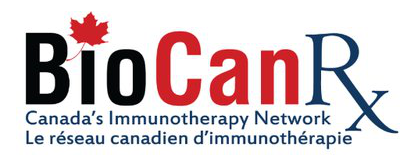By Heather Blumenthal
 The scientific hurdles involved in taking an idea from the laboratory to the clinic are enormous. But in the case of immunotherapies, the hurdles aren’t just scientific – they’re legal, they’re economic and they’re health-system related, areas that aren’t necessarily covered in a scientific education.
The scientific hurdles involved in taking an idea from the laboratory to the clinic are enormous. But in the case of immunotherapies, the hurdles aren’t just scientific – they’re legal, they’re economic and they’re health-system related, areas that aren’t necessarily covered in a scientific education.
That’s why Tania Bubela’s contribution is so important to BioCanRx’s success. Dr. Bubela, the Dean of Health Sciences at Vancouver’s Simon Fraser University, takes on those hurdles and, in doing so, helps smooth the rocky road to the clinic. Her Clinical, Social and Economic Impact project with BioCanRx is intended to move toward rational design of policies and practices to enable clinical translation of cost-effective, novel cancer biotherapeutics such as immunotherapies in Canada.
The challenges to this successful translation, she says, are “endless” and they start at the very beginning, with making sure the research team is constructed to have the expertise it needs to address them right off.
“You want to think about knowledge and knowledge flows, and bringing the right interdisciplinary team together,” she says. Other issues need to be considered as well.
Intellectual property, for instance, can affect the delivery of research discoveries to the clinic. The IP protection landscape is changing, with data exclusivity becoming a primary mechanism for enforcing exclusivity in the cell therapy space, Dr. Bubela says. Data exclusivity refers to the period of time during which the information provided to a regulator for the purposes of gaining an approval remains confidential or cannot be relied upon by a third party to gain approval for a follow-on product. Because cell therapies cannot easily be reverse engineered, that information will be crucial to the development of any follow-on products. However, adding to the complexity of the data is the fact that it may relate more to processes rather than products. Our current system is not well equipped to deal with this approach to extending monopolies and preventing generics (biosimilars) from coming onto the market. The effect will be to increase costs to health systems over longer periods of time.
One of the priorities for BioCanRx is combination therapy. But when each part of the therapy comes from a different company, you need to resolve issues about protecting each company’s own intellectual property while moving forward on the therapy. For instance, CAR-T therapy, one of the most promising immunotherapies, has just recently been approved in the United States for a specific indication, but this therapy, which was developed with public funding, has already been the subject of litigation over intellectual property between two universities that were involved in the original research. This kind of litigation, Dr. Bubela says, could be a real impediment to making therapies available and agreements should be negotiated clearly and early to avoid such conflicts. In fact, she says, we need incentives for universities and companies to collaborate on these therapies, which may mean more open public-private partnerships.
Regulation is also a challenge. The current regulatory process for approval of new treatments or therapies is based on a progression of clinical trials to establish safety and efficacy. Some types of immunotherapy used in rarer indications are very targeted and the likelihood of amassing enough patients for a traditional phase III clinical trial is slim, at best. Thus, much of the evidence of safety and efficacy will likely come after a treatment is approved for clinical use. This, Dr. Bubela says, requires a new category of “conditional” approval, which can be rescinded if the evidence from clinical use does not show that the treatment works. Similarly, there could be a new category of reimbursement by public health authorities, conditional payment that can also be rescinded if it turns out that the benefits don’t justify the costs.
Cost, in fact, is another major issue that can be a roadblock to clinical use of immunotherapies, even if they successfully pass through the regulatory process. The reality is, Dr. Bubela says, immunotherapies are extremely expensive, and no public health system is going to be able to pay for all of them.
“We can barely pay for what we’ve got. There will have to be some limits on the amount the public will pay for these treatments,” she says. “The real question is how do we make these products affordable for patients?”
For a start, she says, we have to bring the costs down, at all stages. At the manufacturing stage and the time leading up to it, for instance, a bioengineer is a much-needed member of the team, because he or she knows how to reduce manufacturing costs. Other areas for cost reduction lie in reducing hospital stays by learning how these therapies work, where the side effects come from and finding solutions for the next iterations that require less medical attention.
All of these issues can undo the most promising scientific work and all are most easily dealt with if they’re built into the project from the start. Dr. Bubela hopes that her project will provide researchers and regulators with practical assistance at every stage of their work, providing them with competitive intelligence on the global field of biotherapeutics R&D; new collaborative models; models for clinical implementation; and new reimbursement paradigms to aid in therapies being available to patients.
The net result of her work will be a pathway for lab-based discoveries to make the journey to the clinic, where they can carry out their intended work, saving the lives of people with cancer.

